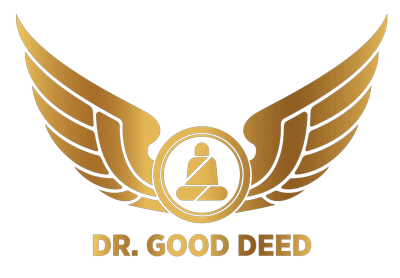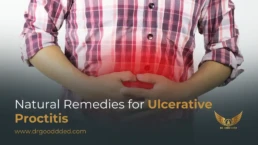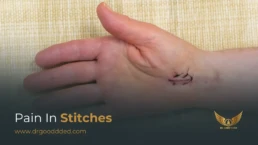What is red light therapy?
Red light therapy (RLT) is a treatment that uses specific light wavelengths to trigger changes in your body’s cells.
Table of Contents
ToggleUnlike sunlight, which contains harmful UV rays, RLT uses low-level red and near-infrared light that won’t burn or damage the skin. This form of LED light therapy is completely painless and is considered safe when used correctly.
It’s also called Photobiomodulation or low-level light therapy (LLLT). You’ll often find it in wellness centers, dermatologist offices, gyms, and at-home devices.
The treatment can target different goals, such as skin rejuvenation, reducing inflammation, wound healing, and even muscle recovery.
How does RLT work?
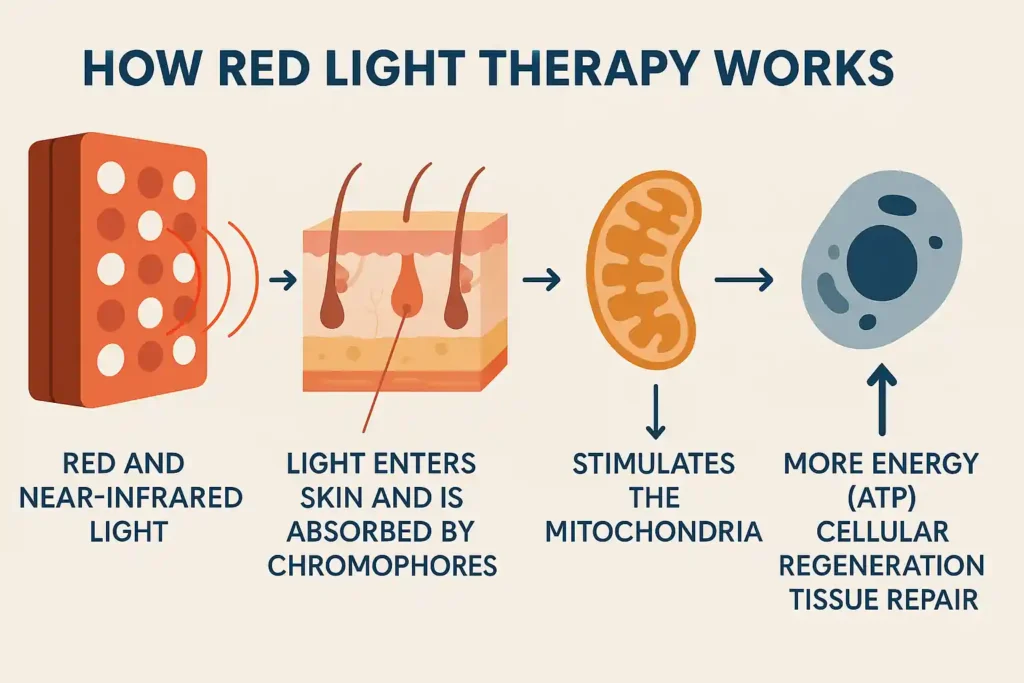
To understand how red light therapy works, you need to know what happens at the cellular level. The treatment uses LED light panels or handheld devices that shine red and near-infrared light onto your skin. Your tissues can be deeply penetrated by these light wavelengths.
Here’s the red light therapy science in action:
- Light enters the skin and is absorbed by tiny parts of cells called chromophores.
- This process triggers mitochondrial stimulation, your cell’s “power plants” work harder.
- The result is more ATP production, a type of energy your cells use to function.
- This boosts cellular regeneration and tissue repair.
The combination of light absorption by chromophores and energy absorption by cells helps the body work more efficiently, repair damage, and reduce inflammation. This is also linked to nitric oxide release, which can improve blood flow.
What are the benefits of RLT?
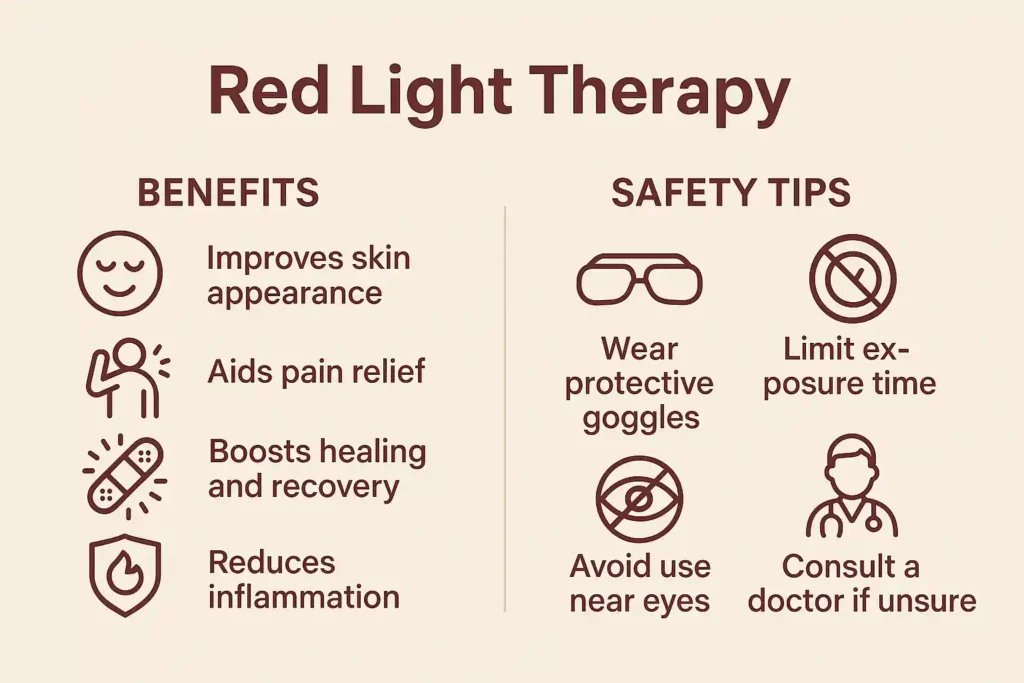
The red light therapy benefits are backed by research and clinical use. The treatment works on both surface-level skin concerns and deeper tissue health, thanks to red light therapy science and Photobiomodulation.
- Improved skin appearance: Red light therapy for skin can help with skin rejuvenation, acne treatment, and even reducing scars. It promotes the production of collagen, which helps maintain the skin’s firmness and smoothness.
- Pain relief and joint support: RLT is effective for red light therapy for pain relief. It may ease arthritis, injuries, and stiffness by improving blood circulation and lowering inflammation.
- Faster healing: Supports tissue repair and wound healing by boosting ATP production. This helps damaged areas recover faster and can assist in muscle recovery after workouts.
- Reduced inflammation: The therapy supports oxidative stress reduction and reducing inflammation, which can benefit chronic conditions and speed up post-surgery recovery.
- Hair and scalp health: Some use it for hair growth therapy, as it stimulates follicles through light absorption by chromophores and better nutrient delivery.
- Better sleep: It may promote sleep improvement by influencing melatonin regulation, especially in people exposed to artificial light late in the day.
Red light therapy and insurance
Insurance rarely covers red light treatment unless it’s prescribed for a specific medical reason and performed in a medical facility.
Cosmetic uses like anti-aging treatment, acne treatment, or skin rejuvenation are almost never covered.
If you need it for pain relief or recovery, some policies may cover sessions done in physical therapy clinics, especially when linked to documented joint pain therapy or injury rehabilitation. Always confirm with your provider.
What are the risks of RLT?
When used correctly, RLT is considered safe. Still, there are a few things to remember:
- Avoid looking directly at the lights without protective goggles.
- Too much exposure can cause temporary redness or skin irritation.
- People with certain conditions should avoid it, such as those taking light-sensitive medications or with a history of skin cancer.
Where can you get RLT?
You can find RLT in many places:
- Dermatology clinics for skin rejuvenation and acne treatment.
- Rehabilitation centers for muscle recovery, joint pain treatment, or wound healing.
- Gyms and spas for overall wellness.
- At-home devices, from LED light panels to smaller handheld units.
When choosing a location, check that they use safe devices and follow proper guidelines for light exposure.
Takeaway
If you’re considering red light therapy, here’s what to remember:
- Know your goal: Decide if you want it for beauty, pain relief, or recovery.
- Understand the process: Learn how red light therapy works and the role of Energy absorption by cells in healing.
- Choose the right device: Professional-grade LED light panels deliver more consistent results than cheap gadgets.
- Stay consistent: For best red light therapy benefits, use it regularly over weeks or months.
- Follow safety guidelines:Use goggles, avoid overuse, and get advice if you have light-sensitive conditions.
- Be realistic: Results come gradually; RLT supports healing but isn’t a one-time fix.
- Ask about professional care: Clinics may offer stronger Infrared light therapy and customized plans.
FAQs
What does red light therapy actually do for you?
Red light therapy sends safe light wavelengths into skin and tissues, boosting mitochondrial stimulation and ATP production. This process improves healing, reduces pain, and supports skin, muscle, and joint health.
Does red light therapy actually work?
Yes. Backed by red light therapy science, it enhances cellular regeneration, improves blood flow, and supports wound healing, muscle recovery, and skin rejuvenation through targeted Light absorption by chromophores.
Who should not use red light therapy?
Avoid RLT if you take light-sensitive medications, have active skin cancer, severe eye conditions, or are pregnant without medical advice. Safety should be the first priority.
What are the cons of red light therapy?
Red light therapy benefits take time, requiring consistent sessions. Overuse may cause mild irritation. It’s rarely insurance-covered and may be costly for frequent treatments.
Is red light therapy good for eczema?
Red light therapy for skin may help eczema by reducing inflammation and improving barrier function. In addition to dermatologist-recommended treatment, it can reduce symptoms, but it is not a cure.

This article is medically reviewed by Dr. Chandril Chugh, Board-Certified Neurologist, providing expert insights and reliable health information.
Dr. Chandril Chugh is a U.S.-trained neurologist with over a decade of experience. Known for his compassionate care, he specializes in treating neurological conditions such as migraines, epilepsy, and Parkinson’s disease. Dr. Chugh is highly regarded for his patient-centered approach and dedication to providing personalized care.
